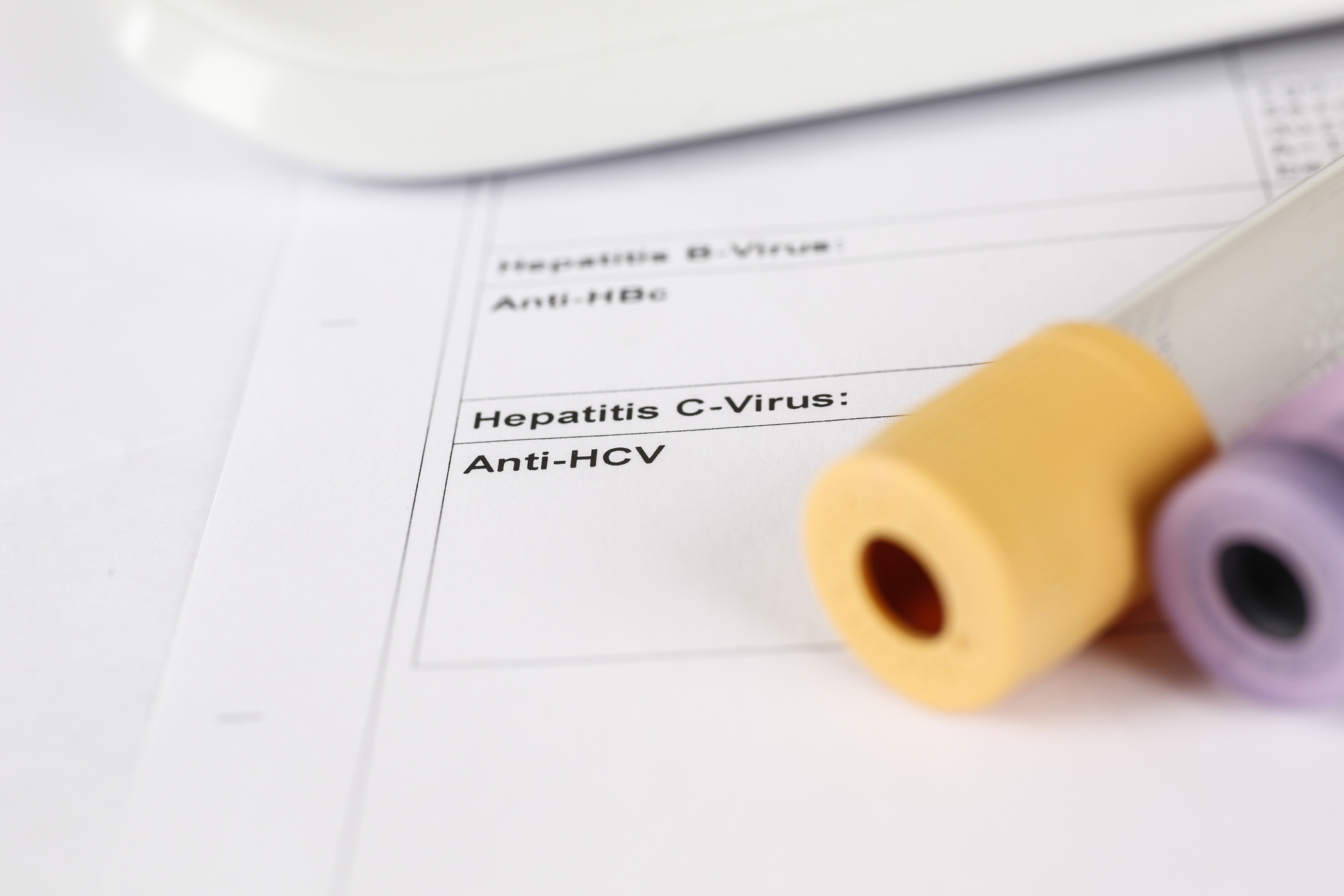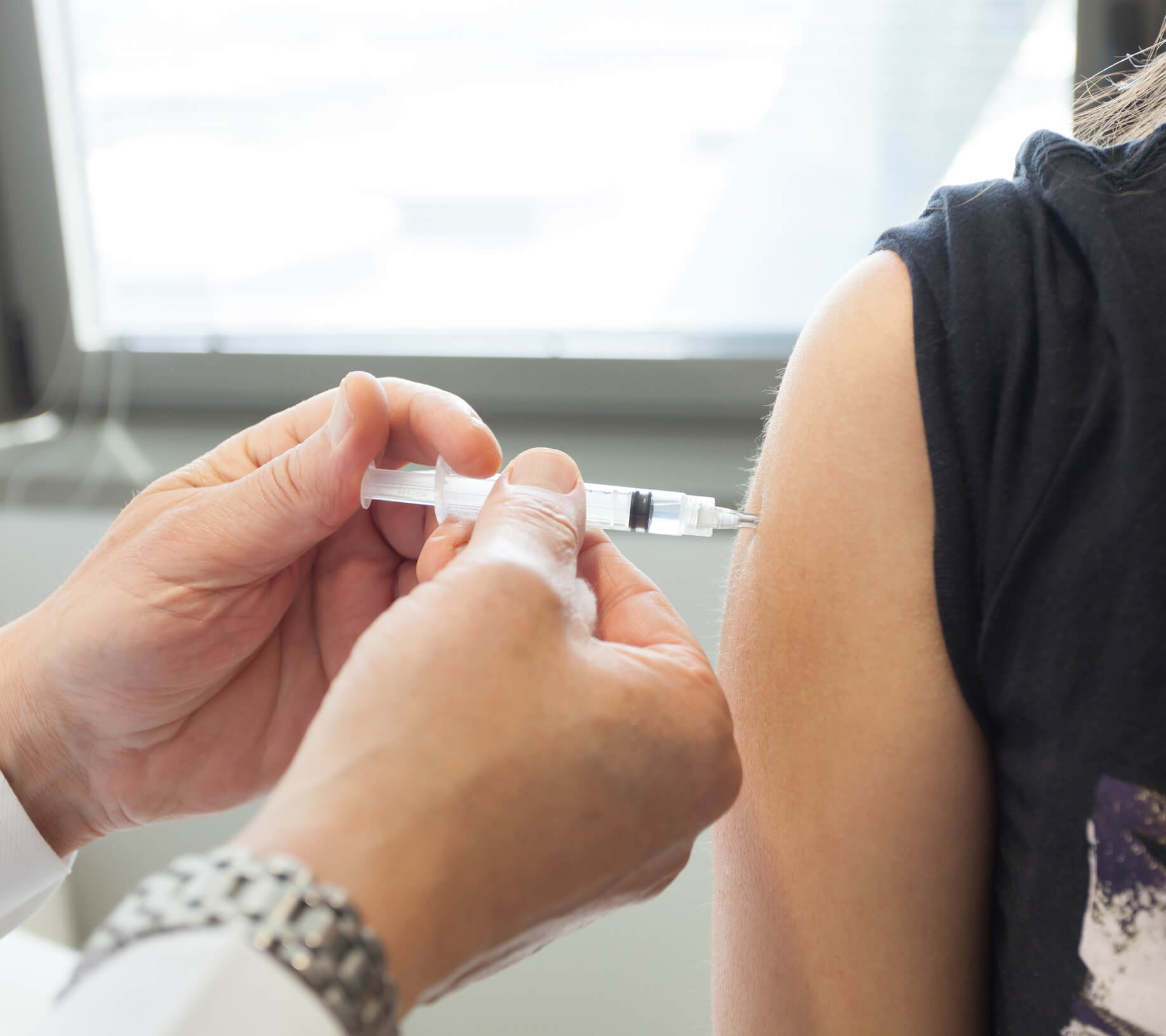Robin West needs a liver. At 34 years old, the U.S. military veteran and mom of a rambunctious toddler spends her days waiting for a call that will change her life—a call that her name on the Colorado transplant list has been matched with someone whose organ can be transplanted into her body. Born with a rare gastrointestinal disorder called biliary atresia, a condition that progressively destroys the bile ducts that carry bile from the liver to the intestine. She underwent surgery when she was just 8 weeks old, when doctors performed a procedure sometimes known as a Roux-en-Y or a Kasai procedure. It was meant to reroute her bile drainage system and take pressure off her liver. It bought West’s body time. She had a normal childhood. She went to college. She signed up to serve her country. But she was serving in the U.S. Army in 2016 when she thought she’d caught the flu. A trip to the emergency room said something different. She was experiencing liver disease symptoms. “My liver enzymes were off the charts,” West tells HealthyWay. She was diagnosed that day with primary sclerosing cholangitis, a progressive liver disease that has since landed her on the transplant list. She is one of millions of people in America who live every day with liver disease and its symptoms. West’s childhood diagnosis with biliary atresia was a harbinger that she may have trouble in her future. It’s the most common liver disease that requires transplantation.  But for millions of Americans, a liver disease shows up unannounced, and it’s not caused by a childhood illness. In fact, everything from our weight to our sex lives could eventually lead to damage (or even disease) of the liver. And the numbers of people diagnosed are growing.
But for millions of Americans, a liver disease shows up unannounced, and it’s not caused by a childhood illness. In fact, everything from our weight to our sex lives could eventually lead to damage (or even disease) of the liver. And the numbers of people diagnosed are growing.
What the Liver Does
Located in your abdominal cavity, above the stomach, the liver is one of the body’s biggest organs, and we can’t live without it. The liver is responsible for converting the nutrients we take in into substances the body can use, and when it’s functioning properly it will break down the fats we eat to help make energy. A healthy liver also helps our bodies to handle toxins, removing things like alcohol and the byproducts of certain medicines from the blood and processing them so they can be released back into the blood or the bowels.
Maybe there’s a problem?
As a society, we tend to think of liver disease as something that crops up in aging alcoholics. The internet is rife with memes that poke fun at the idea that one’s “liver light” might come on after a weekend of partying and t-shirts warning “shut up, liver, you’re fine.” Tastelessness of the jokes aside, the idea that liver disease is singular to people who drink excessive amounts of alcohol is patently false. The most common cause of liver disease in America is actually viral hepatitis, particularly hepatitis C, says Lauren Nephew, MD, a hepatologist at Indiana University Health. The chronic (aka lifelong) disease infects some 4.6 million Americans, and an estimated 2,000 die from it every year in the U.S.  “Some risk factors for hepatitis C include [intravenous] drug use, intranasal cocaine, blood product transfusions before 1987, and non-professional tattoos,” Nephew explains. Hepatitis B also kills some 2,000 Americans annually, although rates of infection are rapidly declining, thanks to vaccinations created in the early 1990s that are now given to babies (and are available to older Americans). Whether hepatitis B is contracted via sex, contact with an infected person’s blood, or birth (it can be transmitted from mother to child), estimates of how many people are affected with it vary wildly. The Centers for Disease Control and Prevention (CDC) puts the figure anywhere between 85,000 and 2.2 million Americans. Another cause of liver disease that’s taking root in America is non-alcoholic fatty liver disease (NAFLD), sometimes called just fatty liver disease. “This is expected to be the leading cause of liver disease in the U.S. in the next decade,” Nephew notes. Linked to America’s growing obesity problem, risk factors for fatty liver disease include obesity, diabetes, and high cholesterol. According to the National Library of Medicine, “as the rates of obesity, type 2 diabetes, and high cholesterol are rising in the United States, so is the rate of NAFLD.” It now affects some 25 percent of the global population.
“Some risk factors for hepatitis C include [intravenous] drug use, intranasal cocaine, blood product transfusions before 1987, and non-professional tattoos,” Nephew explains. Hepatitis B also kills some 2,000 Americans annually, although rates of infection are rapidly declining, thanks to vaccinations created in the early 1990s that are now given to babies (and are available to older Americans). Whether hepatitis B is contracted via sex, contact with an infected person’s blood, or birth (it can be transmitted from mother to child), estimates of how many people are affected with it vary wildly. The Centers for Disease Control and Prevention (CDC) puts the figure anywhere between 85,000 and 2.2 million Americans. Another cause of liver disease that’s taking root in America is non-alcoholic fatty liver disease (NAFLD), sometimes called just fatty liver disease. “This is expected to be the leading cause of liver disease in the U.S. in the next decade,” Nephew notes. Linked to America’s growing obesity problem, risk factors for fatty liver disease include obesity, diabetes, and high cholesterol. According to the National Library of Medicine, “as the rates of obesity, type 2 diabetes, and high cholesterol are rising in the United States, so is the rate of NAFLD.” It now affects some 25 percent of the global population.  Typically, diseases that damage the liver eventually result in cirrhosis, a swelling of the liver that is usually the result of years’ worth of damage to the liver. It can be (and often is) caused by alcoholism, but it’s also caused by hepatitis C, bile duct diseases (such as cholangitis, which West is currently suffering from), or a genetic condition such as Wilson’s disease or hemochromatosis. Exactly what sort of disease might affect a liver can be related to lifestyle, to genetics…or to gender.
Typically, diseases that damage the liver eventually result in cirrhosis, a swelling of the liver that is usually the result of years’ worth of damage to the liver. It can be (and often is) caused by alcoholism, but it’s also caused by hepatitis C, bile duct diseases (such as cholangitis, which West is currently suffering from), or a genetic condition such as Wilson’s disease or hemochromatosis. Exactly what sort of disease might affect a liver can be related to lifestyle, to genetics…or to gender.
Liver Disease and Women
“Women are more prone to certain types of liver disease, such as autoimmune hepatitis, primary biliary cholangitis, and toxin mediated liver injury, which includes alcohol-induced liver injury.” explains Seth Levin, DO, a gastroenterologist with the OhioHealth Physician Group. “They are also more likely to present with acute liver failure and to develop benign liver lesions.” While (cisgender) men are considered more likely to abuse alcohol than women, women are more susceptible to its toxic effects on the liver, Levin says, regardless of how much we drink. What’s more, compared to our male counterparts, if a woman develops an alcoholic liver disease, she’s likely to see it progress more rapidly.  The difference in body size can’t be ignored here—and it’s one reason scientists think women are taking a bigger hit. But researchers into the gender divide in liver diseases also put the blame on our immune systems, noting differences in the way the female body reacts to toxins. “Alcohol is toxic to the liver cells called hepatocytes,” Nephew explains. “Over time, that reoccurring damage can cause other cells to attempt to repair the damage and lay down scars. Scar or fibrosis in the liver can progress to cirrhosis.”
The difference in body size can’t be ignored here—and it’s one reason scientists think women are taking a bigger hit. But researchers into the gender divide in liver diseases also put the blame on our immune systems, noting differences in the way the female body reacts to toxins. “Alcohol is toxic to the liver cells called hepatocytes,” Nephew explains. “Over time, that reoccurring damage can cause other cells to attempt to repair the damage and lay down scars. Scar or fibrosis in the liver can progress to cirrhosis.”
What’s happening? Common Symptoms of Liver Disease
Many diseases that affect the liver are asymptomatic, meaning liver disease symptoms won’t show up until someone has reached advanced stages. But if your liver is malfunctioning, there are some basic signs and symptoms of liver disease to look for.
Common symptoms of liver disease include:
- Jaundice (yellowing of the eyes or skin)
- Swelling in the lower extremities or abdomen
- Confusion
- Unexplained weight loss
- Bloody or black stools
 Some milder liver disease symptoms include itching and fatigue, Nephew says. It’s important to call a doctor immediately if you’re observing some of the common symptoms of liver disease, so your healthcare provider can run blood tests and begin treatment if necessary. Even diseases such as hepatitis C can be treated if they’re caught early enough.
Some milder liver disease symptoms include itching and fatigue, Nephew says. It’s important to call a doctor immediately if you’re observing some of the common symptoms of liver disease, so your healthcare provider can run blood tests and begin treatment if necessary. Even diseases such as hepatitis C can be treated if they’re caught early enough.
Liver Damage or Liver Disease?
Unsettling as this all may sound, the liver has an amazing trick up its sleeve that’s not present in many other body organs. The liver can repair itself from certain harms. In other words? Sometimes damage to your liver can be undone…depending on the cause and amount of liver damage. “We describe liver diseases as acute and chronic,” Nephew explains. “Acute means that the condition is likely reversible when the cause of injury is removed. This could be alcohol, a medication, or a virus that the body quickly clears. …After an acute injury, the liver can repair and be normal again,” she continues. Chronic liver diseases, on the other hand, are conditions that are not immediately reversible and require treatment or monitoring. “Over time, a chronic liver disease can cause enough damage to the liver that that damage is not reversible,” Nephew says. “We call this damage fibrosis. If there is enough fibrosis present we call this cirrhosis.”  Still, there is hope with a chronic disease. Chronic liver disease does not (always) immediately lead to death. There are people walking around living with chronic liver diseases. There are people receiving treatment for chronic liver disease and living relatively normal lives. The outcome depends, once again, on the reason for the disease and sometimes on a patient’s willingness to adjust their lifestyle. But people like West fight a stigma that comes with chronic liver disease every day. “I get a lot of people thinking I drank a lot or have hep C,” she says. “Not all of us are alcoholics, some are born this way or develop problems over time.” In West’s case, lifestyle changes aren’t enough. Because her liver was affected by biliary atresia, the disease she has had since birth, the development of cholangitis was a natural progression of the disease. “Basically, it means I need a new liver, because my old one will not last very much longer,” West says.
Still, there is hope with a chronic disease. Chronic liver disease does not (always) immediately lead to death. There are people walking around living with chronic liver diseases. There are people receiving treatment for chronic liver disease and living relatively normal lives. The outcome depends, once again, on the reason for the disease and sometimes on a patient’s willingness to adjust their lifestyle. But people like West fight a stigma that comes with chronic liver disease every day. “I get a lot of people thinking I drank a lot or have hep C,” she says. “Not all of us are alcoholics, some are born this way or develop problems over time.” In West’s case, lifestyle changes aren’t enough. Because her liver was affected by biliary atresia, the disease she has had since birth, the development of cholangitis was a natural progression of the disease. “Basically, it means I need a new liver, because my old one will not last very much longer,” West says.  West has a drain on her side for the bile that builds up in her body, bile that a healthy liver would process. She can’t work. She has to be careful when playing with her little girl because she fears the drain will fall out and she’ll land back in the hospital. Infection could kill her. Infection also pushes her down the transplant list. This is life with a chronic liver disease. For thousands of Americans, this is the way it is. For thousands more, there’s still hope.
West has a drain on her side for the bile that builds up in her body, bile that a healthy liver would process. She can’t work. She has to be careful when playing with her little girl because she fears the drain will fall out and she’ll land back in the hospital. Infection could kill her. Infection also pushes her down the transplant list. This is life with a chronic liver disease. For thousands of Americans, this is the way it is. For thousands more, there’s still hope.
Ch-ch-changes
If you’re fortunate enough not to be born with a liver condition or genetic predisposition, prevention is key…and relatively simple for the bulk of conditions that affect the liver. Because of the spike in fatty liver disease diagnoses on the horizon, lifestyle changes can make a real difference. Ask your doctor to run blood tests to determine your cholesterol levels. Keep your weight in line with your doctor’s recommendations. Address any blood pressure concerns. If you’re on regular medications, ask your doctor if they can affect the liver. Antidepressants, in particular, are often linked to liver damage, especially those classified as monoamine oxidase (MAO) inhibitors. If you’re taking an antidepressant regularly, your doctor may recommend regular blood tests to determine your liver’s health. Acute damage from a medication can be repaired, Nephew says, so it’s important to follow up on blood testing recommended by your doctor rather than putting it off because you hate needles! If you haven’t already received the hepatitis B vaccine, the CDC recommends calling your general practitioner and scheduling the shot immediately to protect yourself from the blood-borne disease.  Hepatitis C risks, such as intravenous drug use, should be avoided for simple health reasons, but if you had a blood product transfusion before 1987, Nephew suggests asking your primary care physician to do a hepatitis C screening. And if you indulge in alcohol at all, it’s wise to keep your drinking in check. Although it’s not the only cause of liver damage and disease, Mommy’s wine time can quickly become a problem, not least because of the role our gender plays in risk factors. “Women should make sure not to drink more than the recommended amount of daily alcohol,” Nephew says. “Women should know that our livers are more sensitive to the toxic effects of alcohol than men’s livers; therefore it takes a smaller amount of alcohol to damage the liver.” The recommendations from the doctors are strict: Women should have no more than one alcoholic beverage per day, and that doesn’t mean one bottle of wine. One 12-ounce beer, one 5-ounce glass of wine, or 1.5 ounces of liquor is the limit.
Hepatitis C risks, such as intravenous drug use, should be avoided for simple health reasons, but if you had a blood product transfusion before 1987, Nephew suggests asking your primary care physician to do a hepatitis C screening. And if you indulge in alcohol at all, it’s wise to keep your drinking in check. Although it’s not the only cause of liver damage and disease, Mommy’s wine time can quickly become a problem, not least because of the role our gender plays in risk factors. “Women should make sure not to drink more than the recommended amount of daily alcohol,” Nephew says. “Women should know that our livers are more sensitive to the toxic effects of alcohol than men’s livers; therefore it takes a smaller amount of alcohol to damage the liver.” The recommendations from the doctors are strict: Women should have no more than one alcoholic beverage per day, and that doesn’t mean one bottle of wine. One 12-ounce beer, one 5-ounce glass of wine, or 1.5 ounces of liquor is the limit.  “Levels higher than that can over time damage the liver,” Nephew warns. A final piece of advice comes from West: Be vigilant if you are noticing what you think might be symptoms of liver disease. “I wish I would have gone to the doctor when I first got sick,” she says. “I thought I had the flu and it would pass. I was wrong. If you have any unusual symptoms, I’d suggest getting them checked—particularly, yellow skin, fevers, abdominal/back pain, flu-like symptoms.”
“Levels higher than that can over time damage the liver,” Nephew warns. A final piece of advice comes from West: Be vigilant if you are noticing what you think might be symptoms of liver disease. “I wish I would have gone to the doctor when I first got sick,” she says. “I thought I had the flu and it would pass. I was wrong. If you have any unusual symptoms, I’d suggest getting them checked—particularly, yellow skin, fevers, abdominal/back pain, flu-like symptoms.”
Help for Those Who Need It
If your liver is in good condition, you can help out those who are struggling. Most transplants come from deceased donors, but the liver is one of the few organs that can be transplanted from a living donor. That’s because only a section of the liver needs to be transplanted, as it will regrow in both the donor’s body and the transplant recipient’s body.  If you know someone who needs a liver, you could consider being tested to see if you’re a match for a living transplant. You can also sign yourself up as an organ donor to help someone after you die. Even if you’re not a candidate for donation, it’s important to ignore the myths about liver disease…for your sake and for those who suffer. Someone who doesn’t exhibit the most common symptoms of liver disease isn’t necessarily abusing drugs or engaging in risky behavior. “Just because someone doesn’t look sick doesn’t mean they are not or [they don’t] have issues going on. So be nice and kind to everyone,” West says.
If you know someone who needs a liver, you could consider being tested to see if you’re a match for a living transplant. You can also sign yourself up as an organ donor to help someone after you die. Even if you’re not a candidate for donation, it’s important to ignore the myths about liver disease…for your sake and for those who suffer. Someone who doesn’t exhibit the most common symptoms of liver disease isn’t necessarily abusing drugs or engaging in risky behavior. “Just because someone doesn’t look sick doesn’t mean they are not or [they don’t] have issues going on. So be nice and kind to everyone,” West says.


